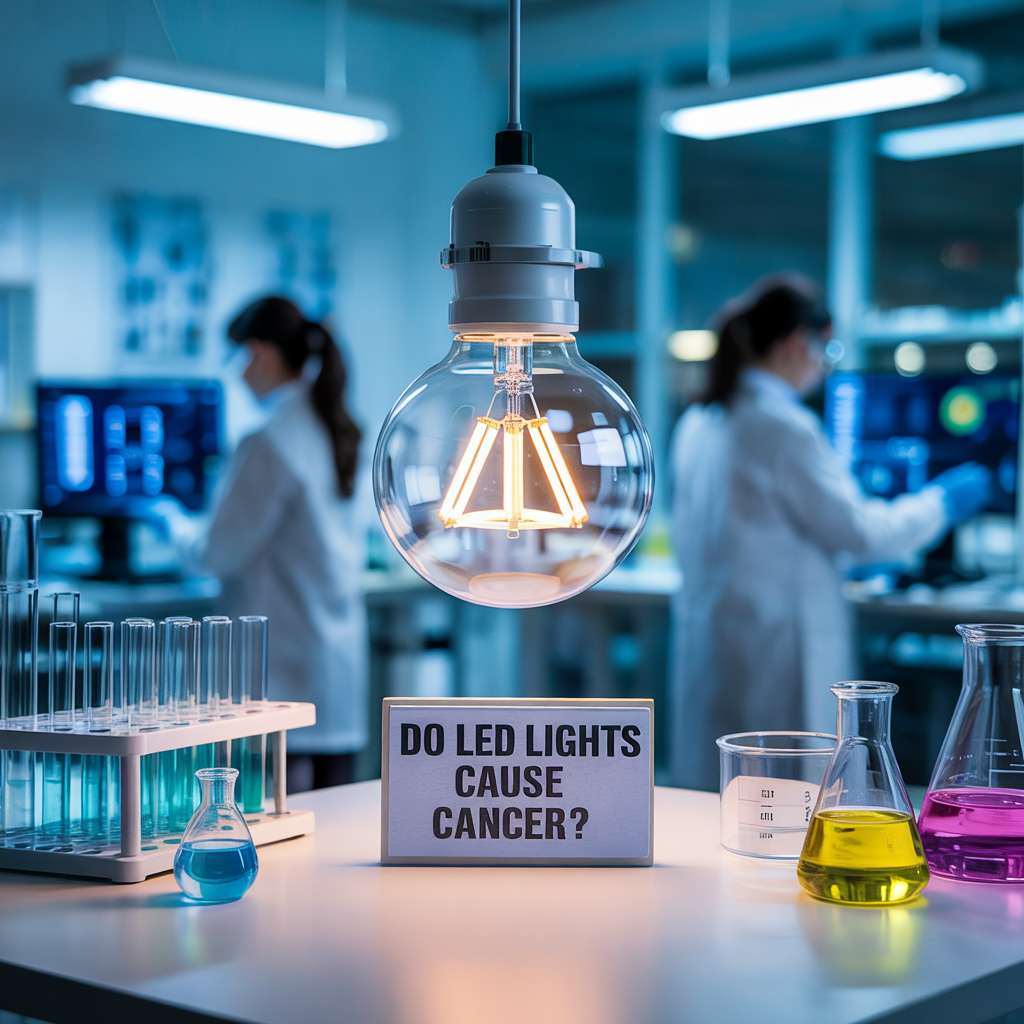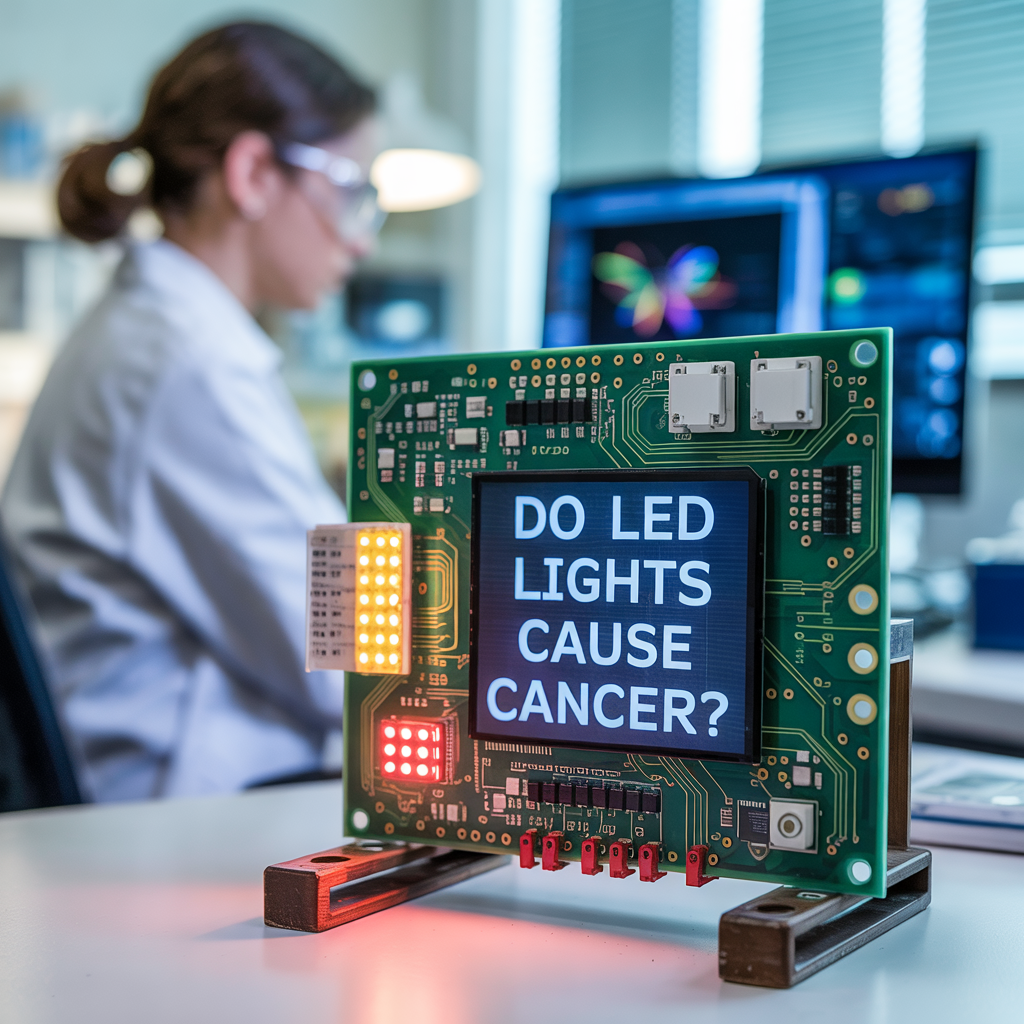Do LED lights cause cancer? Separating Fact From Fiction
Are LED lights safe? This is a question many people ask, especially with the increasing prevalence of LED lighting in homes and workplaces. Do LED lights cause cancer? This article will delve deep into the science behind this question, exploring the properties of LED light, its potential effects on health, and the evidence (or lack…
Are LED lights safe? This is a question many people ask, especially with the increasing prevalence of LED lighting in homes and workplaces. Do LED lights cause cancer? This article will delve deep into the science behind this question, exploring the properties of LED light, its potential effects on health, and the evidence (or lack thereof) linking it to cancer. We’ll examine the different types of LED lights, their wavelengths, and the potential risks associated with prolonged exposure. We’ll also look at what research currently shows and dispel common myths surrounding LED light and its purported link to cancer. By the end, you’ll have a comprehensive understanding of the topic and be able to make informed decisions about your lighting choices.
No, LED lights do not cause cancer. They emit low levels of blue light, which can disrupt sleep if overexposed at night, but there is no scientific evidence linking LED lighting directly to cancer. Proper use and limited nighttime exposure ensure LED lights remain safe.
electrical energy into light. Unlike incandescent bulbs that generate light through heat, LEDs produce light through electroluminescence, a process where electrons recombine with electron holes, releasing photons (light particles). This process is significantly more energy-efficient than traditional lighting methods.

Do LED lights Cause Cancer?
Different types of LEDs and their wavelengths
LEDs are available in various colors, each emitting light at different wavelengths. The color of the light is determined by the semiconductor material used in the LED. For example, blue LEDs use gallium nitride, while red LEDs utilize aluminum gallium indium phosphide. The wavelengths emitted are crucial when discussing potential biological effects.
Read More: The Dawn Of LED Lighting: When Were LED Lights Invented?
LED Light and Potential Health Concerns
The Electromagnetic Spectrum and Light’s Energy
Understanding the electromagnetic spectrum is essential. Light, including LED light, is a form of electromagnetic radiation. The spectrum ranges from radio waves (low energy) to gamma rays (high energy). Visible light falls in the middle, and higher-energy forms like ultraviolet (UV) radiation are known to cause damage to DNA, potentially leading to cancer. However, visible light, including that from LEDs, has significantly lower energy than UV radiation.
UV Radiation and LEDs
Some early LEDs emitted small amounts of UV radiation, but modern LEDs are designed to minimize or eliminate this. The presence of UV radiation is a more significant concern than the visible light emitted by LEDs. Manufacturers carefully control the materials and processes used in manufacturing to minimize UV emissions. The vast majority of commercially available LED lighting produces negligible amounts of harmful UV radiation.
Scientific Studies on LED Lights and Cancer

Review of existing research on LED light and cancer risk
Numerous studies have investigated the potential link between LED light exposure and cancer. To date, there’s no conclusive evidence linking LED light exposure to an increased risk of cancer in humans. Most studies have shown no significant correlation between LED light use and cancer development. However, more research, particularly long-term studies, is needed to definitively address all potential concerns.
Read More: 15 Beautiful Romantic Bedroom Lighting Ideas to Set the Mood
Limitations of current research and future research directions
The existing research on LED lights and cancer is limited by several factors, including the relatively recent widespread adoption of LED lighting, the difficulty in isolating LED light exposure from other lifestyle factors that influence cancer risk, and the varying quality and methodologies employed across studies. Future studies could explore more specific aspects like the role of blue light wavelengths and the impact of prolonged or intense LED exposure.
Comparing LED Lights to Other Lighting Technologies
LEDs vs. Incandescent Bulbs
Incandescent bulbs generate light by heating a filament until it glows. This process is inefficient and produces significant heat. While there are no direct cancer links to incandescent bulbs, the heat they produce might be indirectly linked to other health concerns. LEDs are far more energy-efficient and don’t generate the same level of heat.
LEDs vs. Fluorescent Lights
Fluorescent lights contain mercury, a known toxin. While the amount of mercury is small, breakage poses environmental and health risks. They also contain phosphors which, while not directly linked to cancer, have been studied for potential health effects. LEDs are mercury-free and generally considered safer in this regard.
Addressing Public Concerns and Misconceptions
Debunking myths surrounding LED light and cancer
Many myths and misconceptions surrounding LED lights and cancer are circulating online. Some claim that blue light emitted by LEDs is inherently carcinogenic. While blue light has been linked to other health issues (such as sleep disruption), there’s currently no evidence to support a direct link to cancer. It’s crucial to rely on credible scientific research rather than anecdotal evidence.
Practical Guidelines for Safe LED Light Use
Tips for minimizing potential risks from LED light exposure
While no conclusive evidence links LED lights to cancer, taking precautions is always advisable. Avoid staring directly at very bright LED lights for extended periods. Use diffused lighting to reduce glare. This advice extends to all bright light sources, not just LEDs. Prioritizing good overall health habits also reduces the overall risks.
The Role of Blue Light and Sleep Disruption
How blue light affects the sleep-wake cycle
Blue light, while not directly linked to cancer, can disrupt the body’s natural sleep-wake cycle. This is because blue light suppresses melatonin, a hormone that regulates sleep. Exposure to blue light from electronic devices before bedtime can lead to insomnia and other sleep problems. Using blue light filters on devices or adjusting screen brightness can help mitigate this effect.
The Importance of Responsible Lighting Choices
Balancing the benefits and potential drawbacks of LED lighting
LED lighting offers numerous advantages, including energy efficiency, longevity, and environmental friendliness. While some concerns regarding blue light and potential health effects exist, these are largely outweighed by the benefits. Making informed choices about lighting and taking simple precautions can minimize any potential risks.
Government Regulations and Safety Standards
Overview of international standards and regulations for LED lighting
Various international organizations and governments set safety standards for LED lighting. These standards ensure that LEDs meet safety requirements concerning UV radiation, electromagnetic interference, and other potential hazards. Manufacturers must adhere to these standards to sell their products legally. These regulations help ensure consumer safety and minimize potential risks.
The Future of LED Lighting and Research
Emerging trends in LED technology and potential future developments
LED technology continues to advance, with developments focused on improving energy efficiency, reducing blue light emissions, and enhancing color rendering. Ongoing research aims to further investigate any potential long-term health effects of LED light exposure and to refine safety standards.
Frequently Asked Questions
What are the most common concerns about LED lights?
The most common concerns revolve around blue light’s impact on sleep and the potential (though currently unproven) link to cancer. Other concerns include eye strain from glare and the potential for flickering in some cheaper LED lights.
Are there any health risks associated with prolonged exposure to LED lights?
While the existing research does not show a direct link between LED light exposure and cancer, some studies show a correlation between blue light and sleep disturbance. Prolonged exposure to intense LED light could potentially lead to eye strain, so using diffused light or taking breaks is advisable.
How can I reduce my exposure to blue light from LED lights?
You can use warm-white or amber-toned LEDs that emit less blue light. You can also use blue-light filters on your screens or dim the lights in the evenings. Maintaining adequate distance from bright LED sources is also beneficial.
Are all LED lights created equal?
No. The quality and specifications vary significantly across brands and models. Look for LEDs with high color rendering index (CRI) values and those that have been certified to meet relevant safety standards.
Final Thoughts
The question of whether LED lights cause cancer remains a subject of ongoing investigation. While current scientific research offers no conclusive evidence supporting a direct causal link, a cautious approach is always advisable. Understanding the properties of LED light, its potential impacts on health, and the importance of responsible lighting choices empowers you to make informed decisions about the lighting in your home and workplace. By minimizing prolonged exposure to high-intensity light and taking simple precautions, you can maximize the benefits of LED lighting while minimizing any potential risks. Embrace the energy-saving and eco-friendly advantages of LED technology while remaining informed and proactive about your health.

